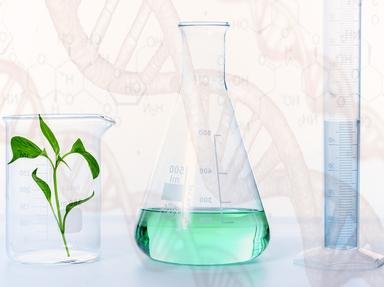Quiz Answer Key and Fun Facts
1. Which compound, when added to aqueous iron(II) sulphate, takes part in a redox reaction?
2. Copper(II) oxide speeds up the decomposition of aqueous hydrogen peroxide under room conditions. What would be seen in a test tube once the decomposition of aqueous hydrogen peroxide using copper(II) oxide is complete?
3. Copper(II) chloride cannot be prepared by reacting dilute hydrochloric acid with
4. What is the same for both ethene and poly(ethene)?
5. Although aluminum is a reactive metal, it does not corrode easily. Why is this so?
6. Which of the following mixtures is best separated by the use of a separating funnel?
7. Rubidium is an element in group I of the Periodic Table. Which statement about rubidium is likely to be correct?
8. When aqueous ammonium chloride was heated with aqueous Y, a pungent gas which turned moist red litmus paper blue evolved. Which ion must have been present in Y?
9. Which of the following compounds share the same type of linkage?
10. Which of the following is an endothermic reaction?
Source: Author
Garhobbs
This quiz was reviewed by FunTrivia editor
gtho4 before going online.
Any errors found in FunTrivia content are routinely corrected through our feedback system.


